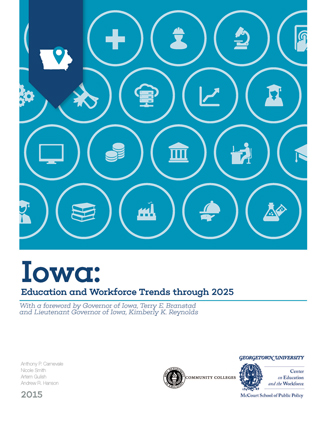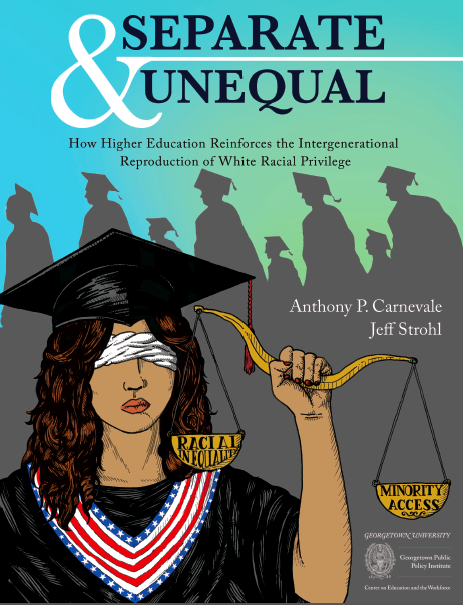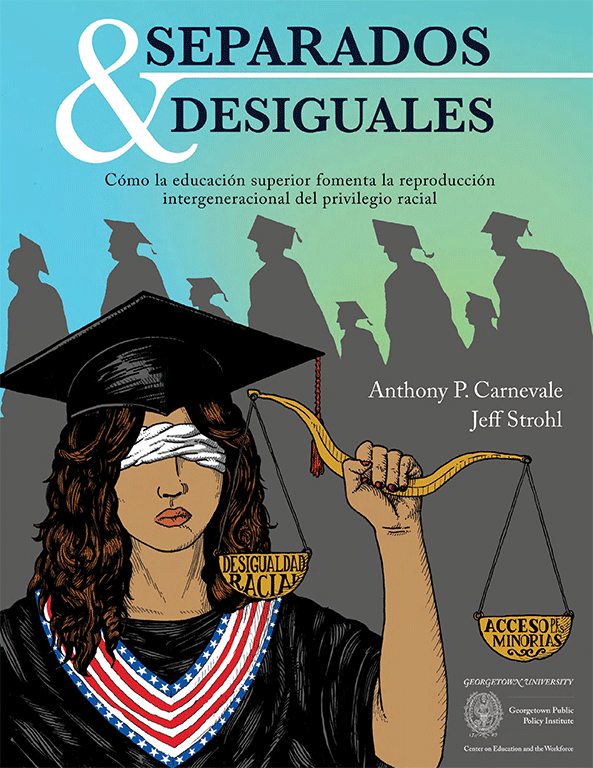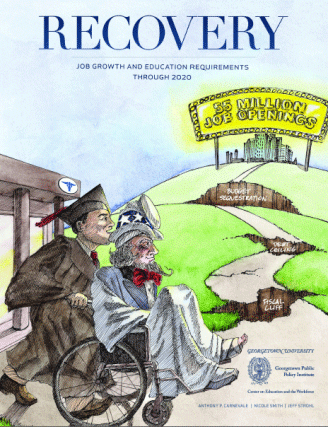CEW explores the links between education, career preparation, and workplace demands. Our research focuses on jobs, skills, and equity with the goal of better aligning education and training with workforce and labor market demand.
Reports
Pennsylvania: Degrees of Value
JANUARY 20, 2016
This report on Pennsylvania’s 14-university State System, which serves more than 100,000 students, shows a 10-percent increase in the number of Bachelor’s degrees awarded between 2009 and 2014. The analysis reveals that the majors leading to the highest earnings for college-educated workers in the state are in areas related to science, technology, engineering, and mathematics (STEM); health; and business—which together account for more than one-third of State System graduates.
Six Million Missing Jobs
DECEMBER 14, 2015
The Lingering Pain of the Great Recession shows that the effects of the Great Recession still linger in the form of 6.4 million jobs that were not created, including 3 million college jobs.
Ranking Your College
DECEMBER 7, 2015
Where You Go and What You Make provides students and families with a list of colleges with the highest earnings potential. The rankings correct for differences in earnings among the schools, including majors, student’s academic preparation before starting college and the likelihood of graduate degree attainment.
Iowa: Education and Workforce Trends through 2025
NOVEMBER 3, 2015
By 2025, 68 percent of jobs in Iowa will require education and training beyond high school – 3 percentage points above the national average of 65 percent.
Learning While Earning: The New Normal
OCTOBER 28, 2015
The New Normal finds that over the last 25 years, more than 70 percent of college students have been working while enrolled.
Hispanos: Carreras Universitarias e Ingresos
OCTOBER 14, 2015
Las carreras universitarias no están perfectamente vinculadas a las ocupaciones, pero sí determinan ingresos a lo largo de la vida. Hoy una educación universitaria es la puerta de entrada a la clase media. Los hispanos que no han tenido acceso a recursos económicos a través de generaciones reciben el mayor beneficio económico obteniendo una licenciatura, ya que sus ingresos a lo largo de la vida incrementan.
Hispanics: College Majors and Earnings
OCTOBER 14, 2015
Majors are not perfectly aligned with occupations, but they do determine lifetime earnings. Today a college education is the gateway to the middle class. Hispanics who have not had access to economic resources over generations receive the most benefit from earning a Bachelor’s degree as their lifetime earnings increases.
Good Jobs are Back
AUGUST 17, 2015
College Graduates Are First in Line analyzes the production of jobs since 2010 and defines the components of a good job.
The Economic Value of College Majors
MAY 7, 2015
The Economic Value of College Majors uses Census Data to analyze wages for 137 college majors.
The Economy Goes to College
APRIL 13, 2015
This report analyzes long-term changes in how goods and services are produced.
States Online College Job Market: Ranking The States
MARCH 25, 2015
The report ranks the states by how many job openings there are per college-educated workers overall and within industries and career fields.
Nursing: Supply And Demand Through 2020
FEBRUARY 25, 2015
The study projects that the economy will create 1.6 million job openings for nurses through 2020. Yet, there will not be enough nurses to fill those openings. We project the nursing workforce will be facing a shortfall of roughly 200,000 nursing professionals by 2020.
From Hard Times to Better Times
FEBRUARY 19, 2015
In this third installment of Hard Times, we update our previous analyses of college majors, unemployment, and earnings over the Great Recession.
College Is Just the Beginning
FEBRUARY 4, 2015
In College Is Just the Beginning: The Employer Role in the $1.1 Trillion Postsecondary Education and Training System, we analyze how much employers spend on training, what they spend their training dollars on, and how spending on formal employer-provided training varies by age, educational attainment, and industry sector.
The Online College Labor Market
APRIL 22, 2014
More than 80 percent of job openings for workers with a bachelor’s degree or higher are posted online. This report analyzes the demand for college talent in the job market by examining online job advertisements for college degree-holders by education, occupations, and industries.
Failure To Launch
SEPTEMBER 30, 2013
Failure to Launch includes an analysis of labor force participation, employment, and earnings for young adults in their 20s and older adults in their 50s, 60s, and 70s between 1980 and 2012.
The Summer Surge In College Unemployment
AUGUST 13, 2013
Every summer, a rise in unemployment frightens college graduates as they venture into the job market. This rise in unemployment, however, is cyclical and, as such, predictable.
Separate & Unequal
JULY 31, 2013
The higher education system is more and more complicit as a passive agent in the systematic reproduction of white racial privilege across generations. This report analyzes enrollment trends at 4,400 postsecondary institutions by race in the past 15 years.
Separados y Desiguales
JULY 31, 2013
El sistema postsecundario es cada vez más pasivo y cómplice, perpetuando sistemáticamente el privilegio racial blanco intergeneracionalmente. Separados y Desiguales: Cómo la educación superior fomenta la reproducción intergeneracional del privilegio racial analiza las tendencias de matrícula de 4,400 instituciones postsecundarias por raza y selectividad institucional durante los últimos 15 años.
Recovery- Job Growth And Education Requirements Through 2020
JUNE 26, 2013
Recovery 2020 provides vital labor market information such as which fields are expected to create the most jobs, the education requirements required to gain employment in the U.S., and the skills most coveted by employers.
Tiempos Difíciles 2013
MAY 29, 2013
La Gran Recesión afectó a todos, pero los recientes egresados de la universidad han tenido dificultad encontrando trabajos. La primera edición de Tiempos Difíciles muestra que a pesar de una lenta recuperación, la tasa de desempleo para recientes egresados de la universidad ha declinado 7.9 por ciento (2010), comparada a la tasa de desempleo del 8.9 por ciento (2009).





















